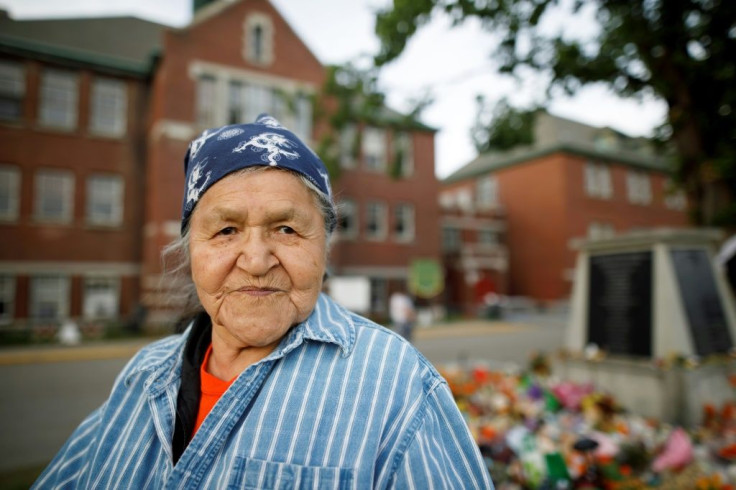Survivor Of Indigenous Boarding School In Canada Recalls Painful Times
It is a lifetime since she left, but Evelyn Camille's throat tightens as she returns to her old indigenous boarding school in western Canada to honor the 215 pupils whose bodies were discovered in a mass grave.
"Many children tried to run away from here," she recalls, the memories of abuse rushing back as she surveys its red brick facade.
Camille has gathered with family and friends at the site in British Columbia to commemorate the "many who never made it home."
Now a tribal elder who teaches the children of her native community its language and customs, Camille was forced to attend the school as a girl in the 1940s.
Camille was separated from her family and sent tens of kilometers (miles) to the Kamloops Indian Residential School.
She would spend 10 years at the largest of 139 such schools set up a century ago to assimilate Canada's indigenous peoples.
"They came and took us in big cattle trucks," she said in an interview with AFP. "They picked us up from our reserves and brought us here."

As she speaks, her throat tightens. Memories of the school horrors come flooding back. "We were physically, mentally, spiritually abused," Camille says, holding back tears.
Just talking about it, she says, "is really upsetting."
"So many of these deaths have never been accounted for," she adds.
Some 150,000 Indian, Inuit and Metis children in total were enrolled in these residential schools, where students were physically and sexually abused by headmasters and teachers who stripped them of their culture and language.
At least 4,100 students died from disease, malnutrition or neglect, according to a truth and reconciliation commission that in 2015 called it "cultural genocide."
Today, those experiences are blamed for a high incidence of poverty, alcoholism and domestic violence, as well as high suicide rates, in indigenous communities.

Canada has been convulsed by the discovery of the remains in Kamloops -- especially as there were only 50 deaths officially on record here.
The valley was first explored by European fur traders in the early 1800s, but has been home for centuries to the Tk'emlupsemc.
Withered, but stronger from her suffering, Camille helped set up and now teaches at an elementary school on nearby Powwow trail in Kamloops that upholds her tribe's ancestral traditions.
Its name, Sk'elep, means coyote -- a spiritual guide in indigenous culture.
The mother of five daughters, as well as "many, many stepchildren and foster children," mainly works with kindergarten classes "because for me, the first steps in education are so important."
"I love them!" she exclaims, a broad smile lighting up her face.
The Sk'elep School blends academic performance and respect for traditions so that students are prepared for today's world but also remember their history, "our way of life."
The Tk'emlups te Secwepemc tribe announced last week the discovery of the children's remains using ground-penetrating radar.
"It was a shock to our system, it opened up old wounds again,' says Camille. "It's so hard to know that these are babies... that hurts more." The tribe has said some of them were as young as three years old.
"The discovery brought light to how we were treated," she added.
Along with many who've travelled from far and wide, she came back to the old school this week, where a makeshift memorial of children's shoes and toys has been erected, to reflect on its dark history and grieve with her community.
"There's never any real closure," she concedes. "The pain is too deep in our hearts, in our minds, in our bodies."
"But we learn to move on."
Camille shares a few hugs, then sings a traditional indigenous song for the children.
"These children roamed around for a long time. Now they can finally go home."
© Copyright AFP 2024. All rights reserved.





















